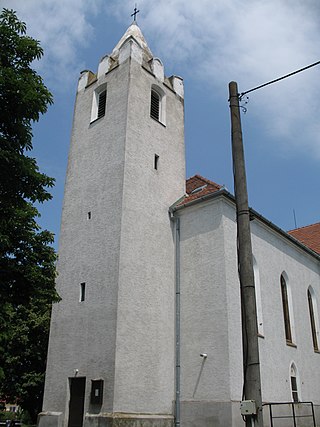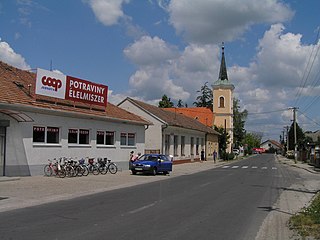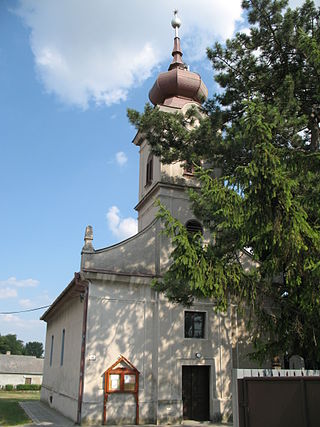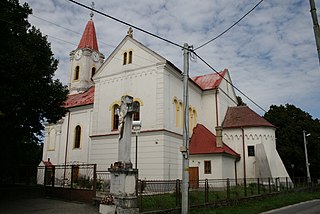Trnávka is a village and municipality in the Dunajská Streda District in the Trnava Region of south-west Slovakia.

Michal na Ostrove is a village and municipality in the Dunajská Streda District in the Trnava Region of south-west Slovakia.

Ohrady is a village and municipality in the Dunajská Streda District in the Trnava Region of south-west Slovakia.

Mad is a village and municipality in the Dunajská Streda District in the Trnava Region of south-west Slovakia.
Macov is a village and municipality in the Dunajská Streda District in the Trnava Region of south-west Slovakia.
Mierovo is a village and municipality in the Dunajská Streda District in the Trnava Region of south-west Slovakia.

Kyselica is a village and municipality in the Dunajská Streda District in the Trnava Region of south-west Slovakia.
Lúč na Ostrove is a village and municipality in the Dunajská Streda District in the Trnava Region of south-west Slovakia.
Trstená na Ostrove is a village and municipality in the Dunajská Streda District in the Trnava Region of south-west Slovakia.

Lehnice is a village and municipality in the Dunajská Streda District in the Trnava Region of south-west Slovakia.
Kútniky is a village and municipality in the Dunajská Streda District in the Trnava Region of south-west Slovakia.

Ňárad is a village and municipality in the Dunajská Streda District in the Trnava Region of south-west Slovakia.

Dolný Štál is a village and municipality in the Dunajská Streda District in the Trnava Region of south-west Slovakia.
Horná Potôň is a village and municipality in the Dunajská Streda District in the Trnava Region of south-west Slovakia.
Jurová is a village and municipality in the Dunajská Streda District in the Trnava Region of south-west Slovakia.

Kľúčovec is a village and municipality in the Dunajská Streda District in the Trnava Region of south-west Slovakia.
Orechová Potôň is a village and municipality in the Dunajská Streda District in the Trnava Region of south-west Slovakia.
Topoľníky is a village and municipality in the Dunajská Streda District in the Trnava Region of south-west Slovakia.
Veľké Dvorníky is a village and municipality in the Dunajská Streda District in the Trnava Region of south-west Slovakia. Its former Slovak name is Dvorníky na Ostrove.

Jelka is a large village and municipality in Galanta District of the Trnava Region of south-west Slovakia.



































































